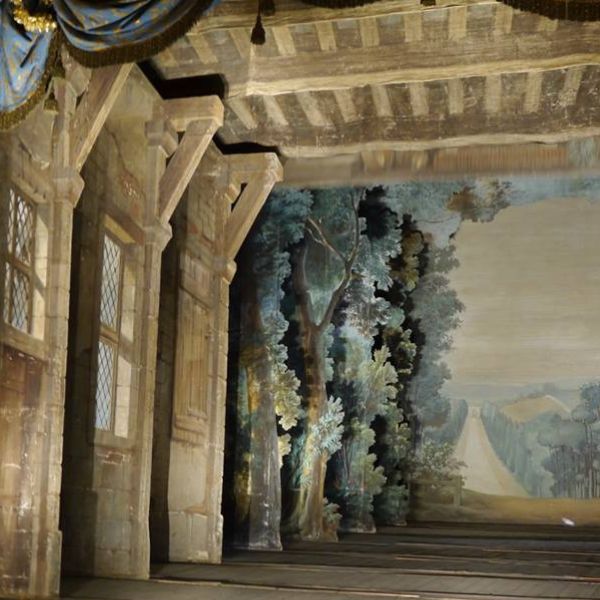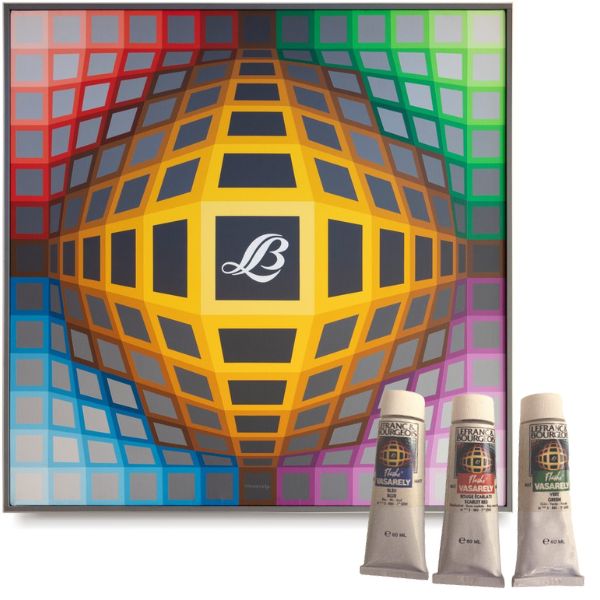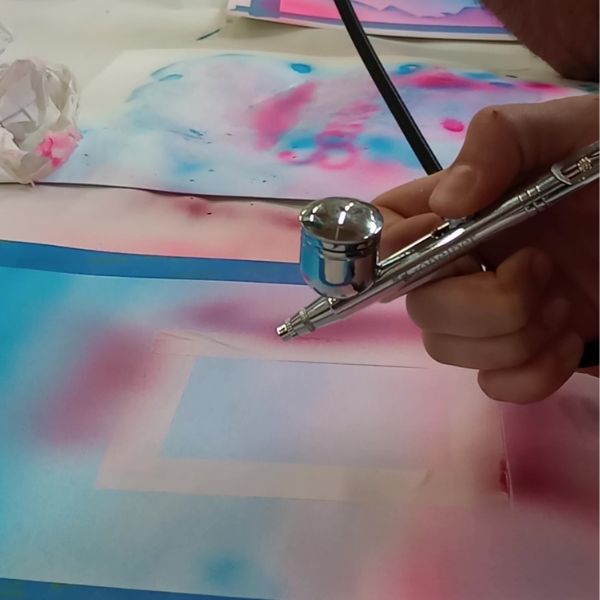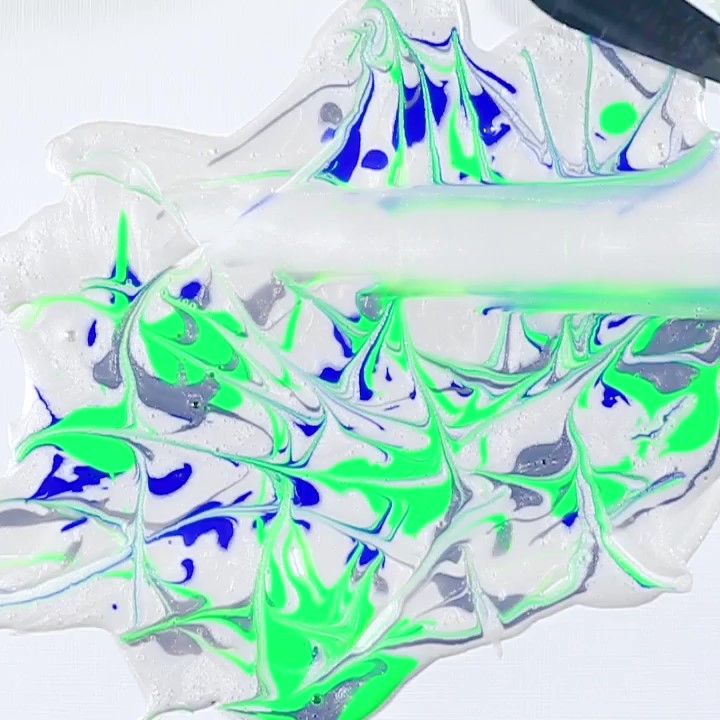The history of Flashe
From the outset, Lefranc Bourgeois has been committed to making each colour more than just a hue: a vibrant and visceral blend of texture and emotion. The company brings colour to life and offers each artist the opportunity to reveal their talent. Since 1720, Lefranc Bourgeois has been innovating and striving towards the painting of the future to facilitate the art of all artists. And the unique characteristics of the Flashe are a testimony to this.

In 1954, Lefranc Bourgeois developed Flashe, the first vinyl paint and alternative to traditional art materials, initially designed for theatre and opera sets, which quickly became iconic with emblematic artists such as Vasarely or Niki de Saint Phalle, for the intensity of its pigments, its mattness and its coverage.
Later, in the 1980s, Victor Vasarely, the great master of optical art, helped to make the properties of Flashe even more exceptional by collaborating with the chemical experts at Lefranc Bourgeois. The artist benefited from the technological know-how of the paint laboratories and together they developed a specific range bearing the Vasarely name and logo.
Vasarely is the man of optical metamorphoses. Among his works, we will remember the Renault logo or the monumental frescoes in the reception hall of the Montparnasse station in Paris.
Although this stamp has now disappeared, the Flashe range is no less famous and appreciated by artists throughout the world.
Anchored in the Fine Arts market, it still fascinates by its unique character, recognisable from all the paintings.


It is quite natural that Flashe has entered art schools. Its properties of consistency, mattness and coverage allow aspiring artists to experiment with all types of supports, metal, fabric, plastic, glass, foam, wood... An endless playground that has everything to appeal to students eager to discover and experiment.
To push the limits of creativity, a whole range of acrylic additives exists.
Indeed, Flashe's extra-fine paint is perfectly matched to the properties of these additives and together they allow you to expand your possibilities tenfold.
Pouring and dripping are two significant examples.
If the first one reminds the veining of marble thanks to the extremely fluid paint poured on the canvas, the second one inevitably evokes the works of Jackson Pollock, projected paint and superposition of drops.
See all acrylic additives.

